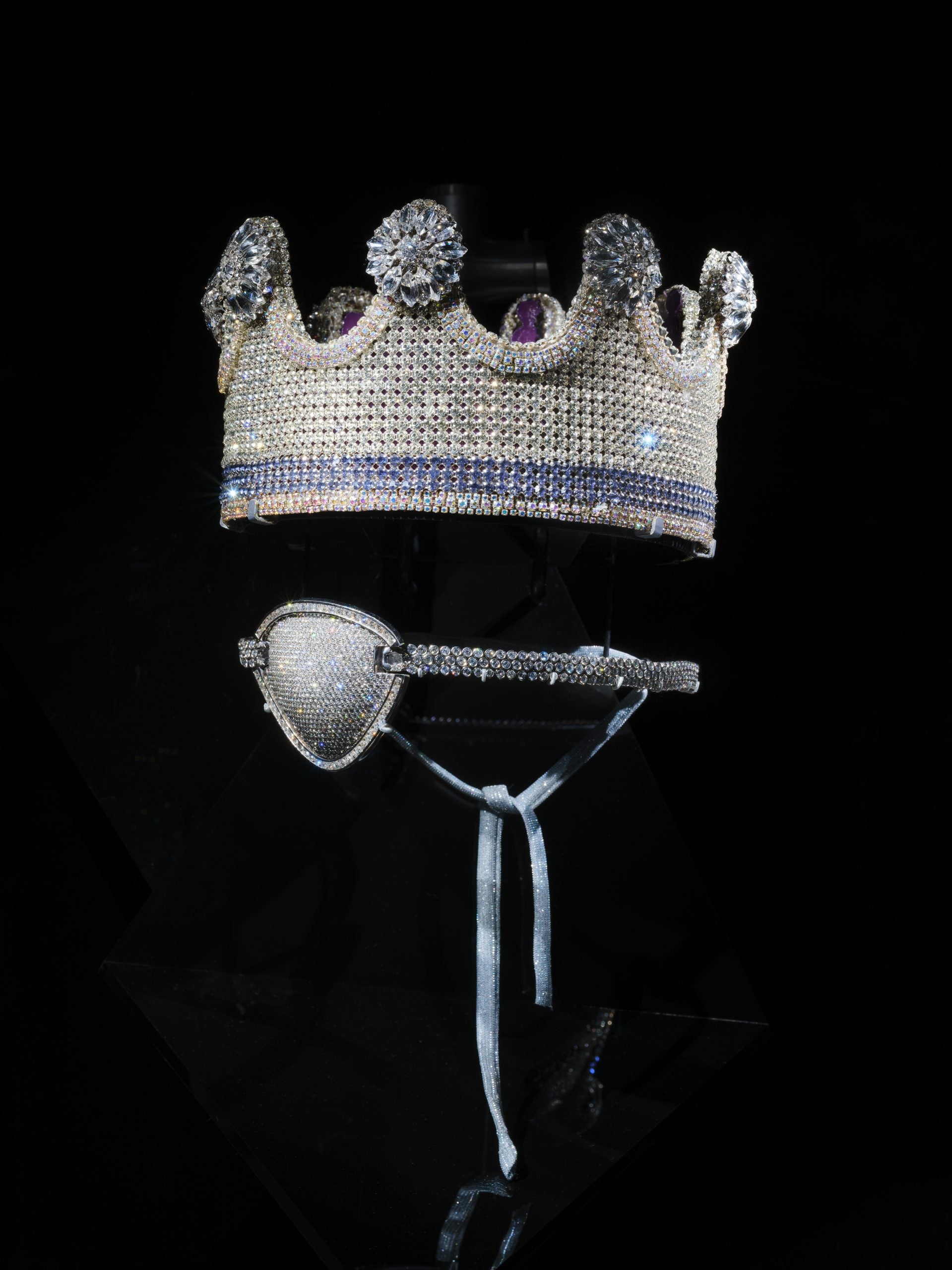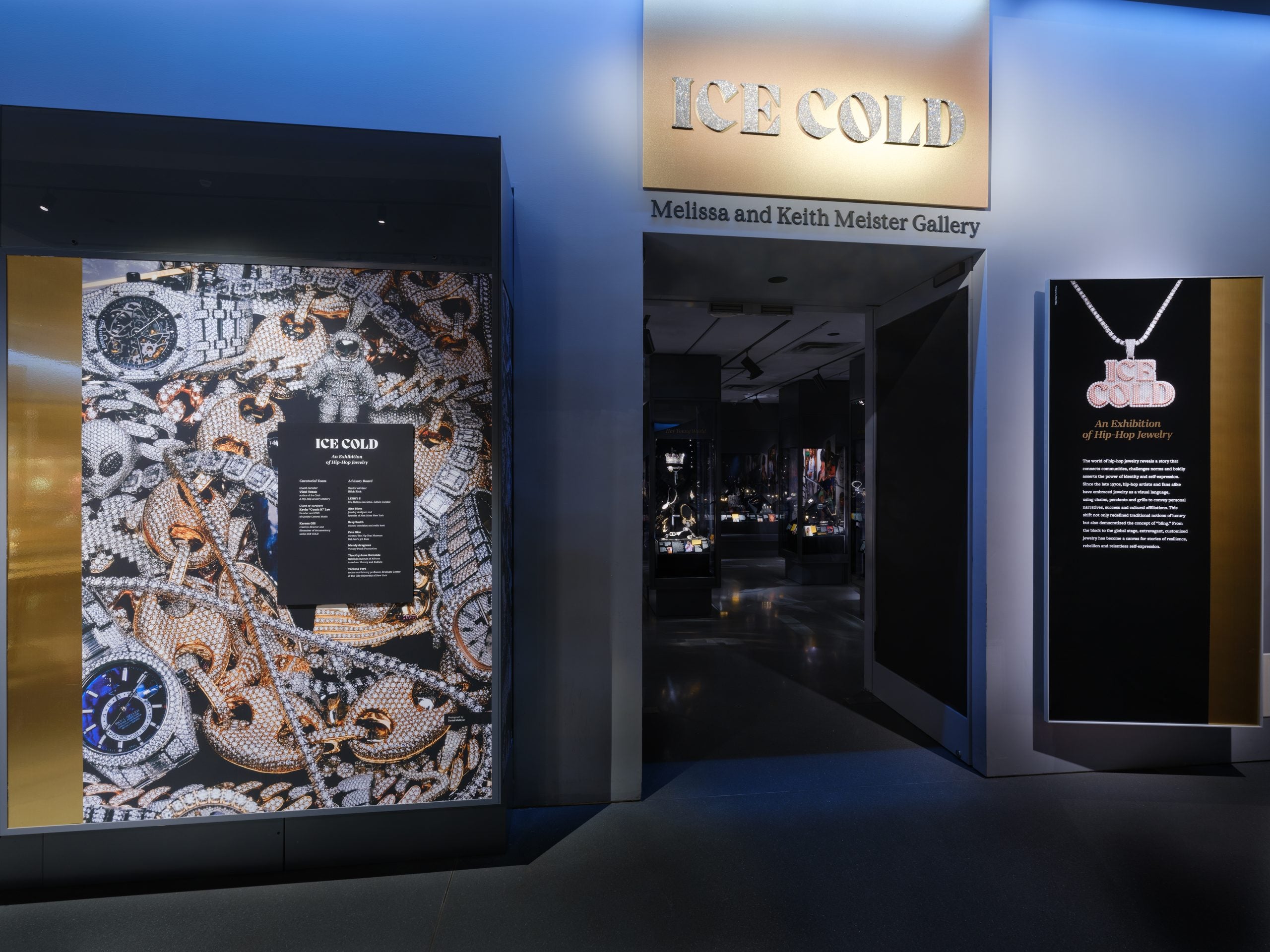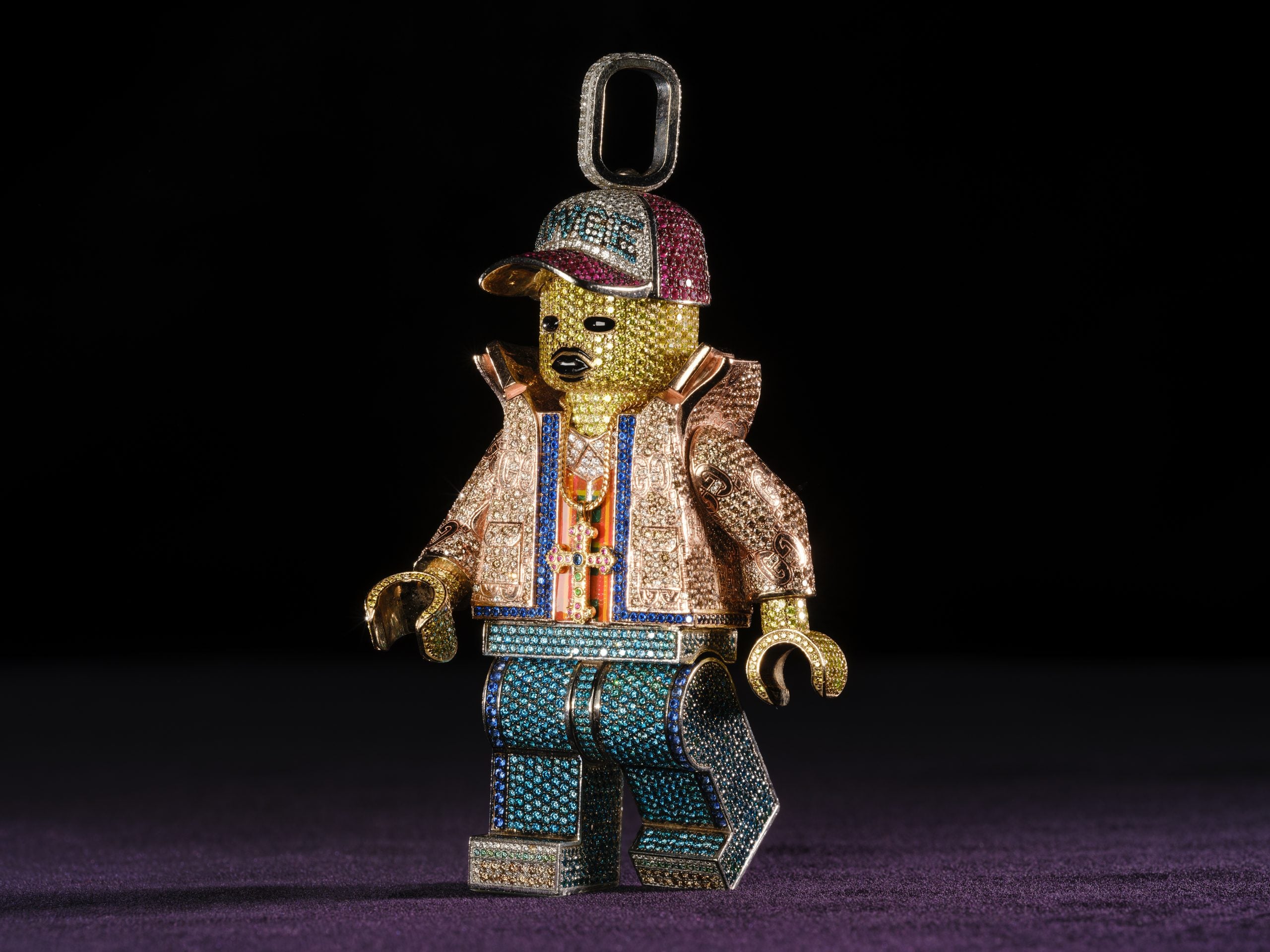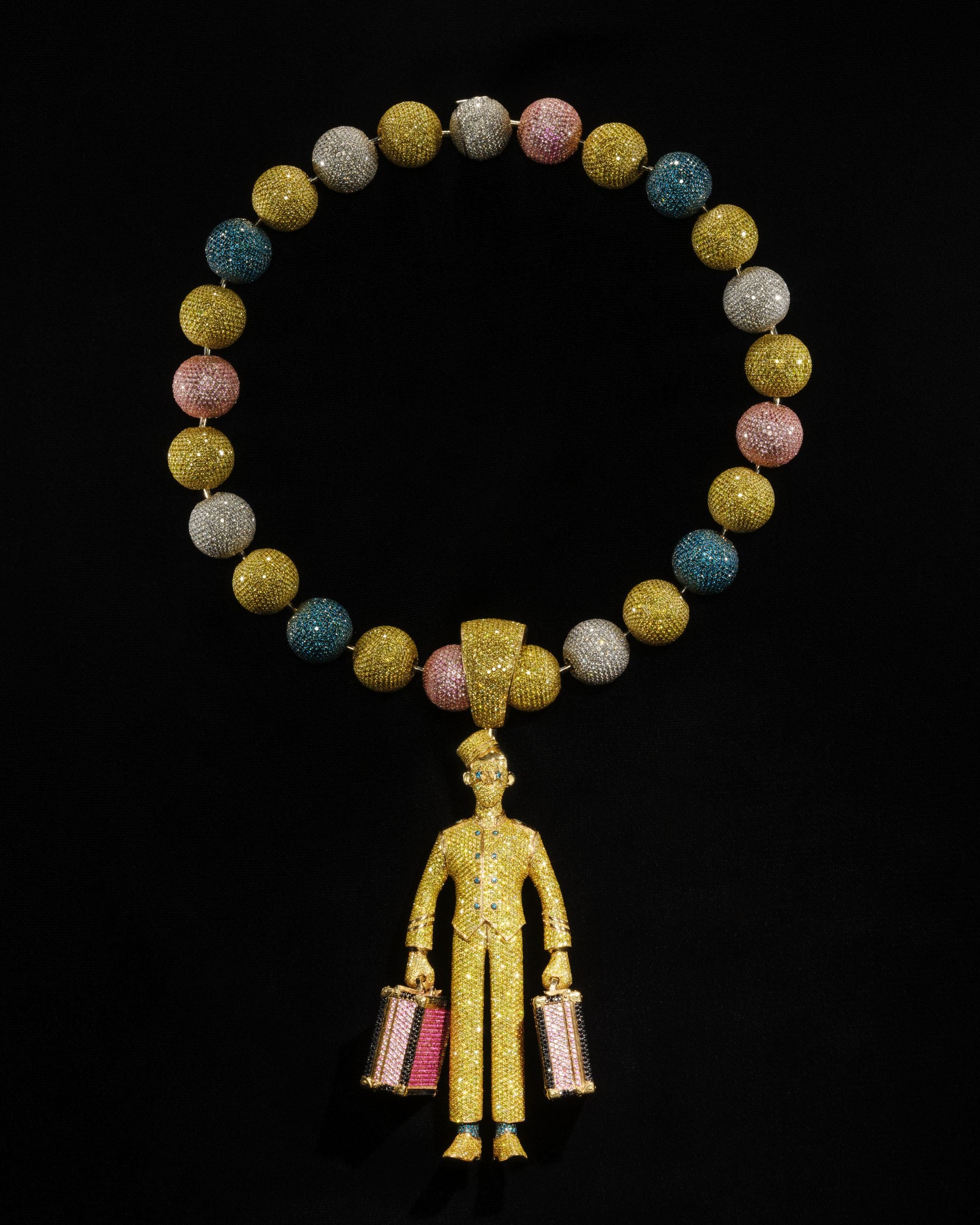
For the rapper Richard Martin Lloyd Walters (better known as Slick Rick), jewelry is rooted in identity. “I have been telling stories through my attire and adornments for as long as I’ve been telling them with beats and rhymes,” he wrote in The Guardian. Case in point: his diamond eye patch isn’t mere adornment; it’s a majestic rendition of something he’s had to wear since a childhood accident cost him his right eye. Likewise, his diamond crown nods to his British upbringing and pays tribute to African royalty. When he commissioned the piece, he recreated the grandeur of Asante chiefs in Ghana who’d adorn themselves with regalia for ceremonies. “My jewels are a gift from my ancestors who sat on the thrones and reigned with rings and rocks the size of ice cubes,” he said.

Just as Slick Rick turned his disability into a creative outlet, other hip-hop artists have channeled their life experiences into inventive designs, pioneering a rich visual art form. The cultural influence of hip-hop jewelry is at the center of a new exhibition at the American Museum of Natural History in New York City. Titled Ice Cold: An Exhibition of Hip-Hop Jewelry, the show displays Slick Rick’s prized jewels alongside other dazzling custom-made jewelry worn by hip-hop’s biggest stars. There are dozens on view, ranging from chains, grillz, charm pendants, bracelets, and rings. Some notable pieces include Nicki Minaj’s iconoclastic Barbie-pink nameplate necklace; Jam Master Jay of Run D.M.C’s gold Adidas necklace; Erykah Badu’s Ma’at grill set; Ghost Face Killah’s eagle arm bracelet; Tyler, the Creator’s Bellhop Necklace, and Beyoncé’s conceptual nail rings. Speaking to the enduring appeal of hip-hop jewelry, these pieces are a testament to its evolution—from the early oversized gold chain and nameplate iterations to the more sophisticated tokens of identity.

In the early ‘80s, as rappers set out to complement their baggy clothes with expressive jewelry, they shopped on Canal Street and worked with local jewelers to craft their one-of-a-kind accessories. Motivated partly by the lack of options in mainstream fashion (which at one point held the perception of the subculture as inferior or ghetto), these artists reclaimed the notion of luxury one commission at a time. Some hip-hop artists took a different route, eschewing the bling lifestyle in favor of leather African medallions and beads referencing Black consciousness. Chuck D (co-founder of Public Enemy) designed his group’s logo to protest ongoing police brutality against Black men.
Personalization is integral to the art form, ensuring the differentiated experience of the wearer. More extravagant pieces emerged during the ‘90s, aligning with the industry’s expansion and the rappers’ growing wealth and fame. They favored pieces that signaled their status, faith or personal interests. As Ice Cold co-curated, Kevin “Coach K” Lee said, “[In] the South, where slavery was born in this country, we went from steel chains to diamond chains. When you come from nothing, if you have the opportunity to buy yourself something incredible, you will.” The Notorious B.I.G.’s gold “Jesus piece,” the diamond-studded Roc-A-Fella medallion, and Ghostface Killah’s Eagle armband are famous examples of the era, all featured in the exhibition.

The following decades saw artists boldly mixing materials and combining styles for even more spectacular designs that pushed fashion forward. A$AP Rocky’s collection is notorious for its multicolored diamond-encrusted pieces; his logo pendant and name necklace exemplify his high-fashion style and penchant for experimentation. Mainstream brands eventually took notice, some earlier than others. Adidas was the first fashion brand to sign an endorsement deal with rappers (Run-DMC) in 1986 following the success of the group’s hit song: “My Adidas.” As part of the contract, the sportswear giant created a gold pendant shaped after their favorite sneaker for each group member. This marked a turning point in the history of hip-hop fashion, paving the way for other high-profile brands to sign on. In 2018, the storied fine jewelry house Tiffany & Co. hired FERG as its first brand ambassador, indicating the infusion of hip-hop into high fashion’s stratosphere.
Although the exhibition overlooks (or perhaps intentionally omits) two major hip-hop figures—namely Kanye West and Sean Combs—it raises the profile of a previously neglected subculture, building on the momentum of the 50th anniversary of hip-hop. Staying away from the problematic duo is understandable, but the exclusion of Lil Kim’s avant-garde style was, however, a grave oversight. To the hip-hop connoisseur, these gaps in storytelling ultimately turned the show into an exercise in filling the blanks, whereby viewers can chime in with their own research and knowledge.

“Bringing the Ice Cold exhibit to the American Museum of Natural History is a testament to the cultural significance of this art form and culture,” said Ice Cold guest curator Vikki Tobak. “This exhibit not only pays homage to hip-hop’s roots with pieces from Biz Markie and Jam Master Jay for example, but also highlights its enduring impact on style and society.”
The exhibition “The Ice Cold: An Exhibition of Hip-Hop Jewelry” is currently being showcased at the American Museum of Natural History in New York City until January 5, 2025.







